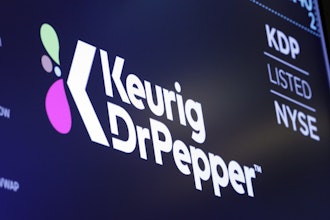The demand for healthy and convenient ready-to-eat (RTE) food is on the rise. Already the largest segment in the overall conventional and non-conventional food industry, the RTE food market is forecasted to grow at a 21.8-percent compound annual growth rate (CAGR) between 2018 and 2023.
Many consumers today want foods that are both convenient and healthy, foods that require little to no preparation and that are natural, organic, non-GMO and more. So how can RTE food manufacturers prepare their facilities for this growing demand? Let’s explore some important considerations as these companies look to the future.
1. Design your facility layout for future growth
If you’re building a new plant, design the layout to accommodate future expansion. Ensure you don’t just meet today’s demands, but that you also create space for projected manufacturing needs five to ten years down the road. Processing lines don’t get shorter or slower; they get longer and faster.
Don’t design a floor plan just big enough for today’s equipment; set yourself up for success by factoring in that extra breathing room. An experienced design firm that specializes in the food and beverage industry, like Stellar, can help you analyze your current processing, strategically plan for future growth and design a facility that can meet current and future needs.
2. Plan for food-safe facility expansions
Any time you expand or renovate a food plant, you heighten the risk for exposure to contaminants. Cutting into walls creates dust and workers coming to your facility can introduce cross-contamination that threatens food safety. Especially with a RTE facility, you want to avoid penetrating the building envelope, if possible, to reduce this risk during construction. You can proactively avoid these issues by designing a building to more easily accommodate future expansions.
For example, consider selecting a site with enough space to build an additional facility next door to your existing one, if that will be needed. Or consider locating storage tanks or other infrastructure so they’re not immediately adjacent to an exterior wall. Plan logistically for future add-ons, even if that means building an extra hallway now.
This so-called “end-state design” process is a win-win: It reduces the risk of contamination when you decide to renovate/expand and you minimize downtime when the addition is under construction.
3. Consider geographic expansion
Growing with the market isn’t always about leaving room for expansion at a particular facility. Depending on the segment and company, you may want to prioritize looking at the geographic market to see where future plants are needed. If you have substantial operations on the east coast, but demand is growing in the west, it may make more sense to build a facility there rather than build upon existing operations. It is possible to build a plant that is too large and not sustainable for a company’s supply chain.
4. Prepare for automation and robotics
As RTE food manufacturers prepare for the future, they must account for the growth of automation and robotics. Traditionally, RTE plants have had more people working in them than highly mechanized beverage facilities, for example, but advancements in technology and equipment have led to a growth in robotics in the RTE space as well.
You must consider what you can afford and where it makes sense to incorporate automation into your process. It’s not just about efficiency, either. After all, people are the biggest culprits when it comes to bringing bacteria and contaminants onto the plant floor.
Build space into your facility
If you can’t afford automation now, leave extra space in your plants. It’s a delicate balance: You don’t want to have wasted space, but you don’t want to be on the bleeding edge of your current equipment either. Your design partner can help you project what you may need and inform you of the technology that’s on the horizon.
Have a plan for what you think is coming
Consider your filling process or your assembly line. You may need to have people doing these jobs today, but perhaps the goal is to automate these operations in five years. You have to think about this now so you can plan accordingly. Design the space and infrastructure for those robotics today so that it’s already in place for when you can afford that in the future.
5. Put quality and safety first
Of course, these are just a few considerations for how you can grow your RTE manufacturing business sustainability and successfully when it comes to your brick-and-mortar processing. The best advice is to partner with a qualified, experienced engineering firm who understands all the variables to building a successful facility: architecture, building design, process engineering, refrigeration, construction and beyond.
The bottom line is this: As your business grows, you must control that growth so you don’t sacrifice product quality and food safety. Nothing can replace those two things. Seek out peer reviews, listen to what your employees and customers say and get input from the people who actually interact with the product on the plant floor every day. They can often provide some of the most valuable insights when it comes to the future of your facilities.
About Stellar
Stellar is a fully integrated firm focused on planning, design, pre-construction, construction, refrigeration, mechanical & utility, building envelope, and total operations & maintenance services worldwide. Visit the company's blog at www.stellarfoodforthought.net or learn about its projects at stellar.net.





















